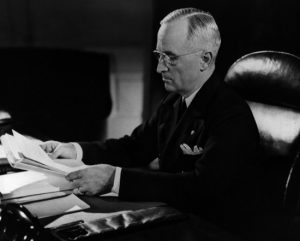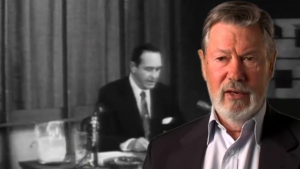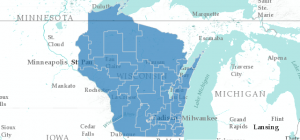
President Harry S. Truman (United States Army Signal Corps, Harry S. Truman Library & Museum.)
On Wednesday, April 25th, the Supreme Court will hear arguments in Trump v. Hawaii. The case stems from a presidential executive order that bans people from six countries*, five of which are Muslim-majority, from entering the United States. The White House issued the ban arguing that travelers from Iran, Syria, Libya, Yemen, Somalia and North Korea could pose a security risk, despite the fact that no citizen from these countries has carried out a fatal terrorist attack in the U.S. in the past two decades. The Court will hear arguments as to whether the President overstepped the limits of the Executive branch by issuing immigration orders that contradict earlier ones issued by Congress.
Trump v. Hawaii could be the greatest test of presidential authority in 66 years. In 1952, in a case called Youngstown v. Sawyer, the Court overturned an order by President Harry Truman that seized control of the U.S. steel industry during the Korean War to prevent it from being disrupted by a labor strike. In a 6-3 opinion, the Court ruled that President Truman violated the Separation of Powers laid out in the Constitution by seizing the industry without Congressional approval. The president cannot give himself that authority, the Court ruled, because “[i]n the framework of our Constitution, the President’s power to see that the laws are faithfully executed refutes the idea that he is to be a lawmaker.”
Learn more about the limits of Presidential Power in our film about Youngstown v. Sawyer, Checks and Balances.
*The Executive Order, signed on September 24, 2017, followed two previous E.O.s issued in January and March 2017 that were rescinded following legal challenges. The September E.O. initially included a sixth Muslim-majority country, Chad, but the White House removed Chad from the list earlier this month.





